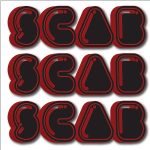
Company, Context, Customer
Uri, Uri, Uri, he scared me at first but now I can not get enough.
When we first started SCA all I knew was how to make things, I knew little to nothing about strategy and the thought of actually having to think too hard about what I’m doing, rather than just making pretty posters did not appeal to me. Uri very quickly helped me to realise I can not do the first without the latter or it will suck.
Uri has taught me the importance of exploring and understanding the bigger picture which will usually help to produce better results. There are a few different ways we can do this. The first way is to identify what type of problem we are dealing with. There are three main different types of problems :
- A critical problem, this is a problem that’s easy to figure out and has a very obvious solution that you don’t really need to think twice about.
- A tame problem, this is when it starts to get a lot more complicated, this type of problem has multiple different factors which play into it. It is important you understand what all those factors are but once you do you should be able to come to a solution with relative ease.
- A wicked problem, the most complicated type. This is a problem where it’s pretty tricky to know where the problem starts and ends. There are a multitude of factors big and small which play a role in it and even when you do understand those factors it’s difficult to know if you have even found your solution. (Side note, I love the word wicked, I think it’s a sexy word… say it with me ….. wicked…put emphasis on that k…..….. wicked…….nice…..)
So now you have identified your problem that the product is solving, well done (hopefully it’s not a wicked one!). Now we need to ask some big questions about the product using the 3 C’s. This will help you to establish how your product is solving these problems. Since teaching us about these 3 C’s I have found them beyond useful for helping to add context, substance and insights into my work. The 3 C’s are as followed……
COMPANY, CONTEXT, CUSTOMER.
SAY IT AGAIN
COMPANY, CONTEXT, CUSTOMER.
AND AGAIN?
COMPANY, CONTEXT, CUSTOMER.
ONE MORE TIME?
COMPANY, CONTEXT, CUSTOMER.
You need to be asking questions that will help you to explore each of these C’s and the relationship that what you are working on has with them, this will enable you to be able to understand what type of environment you and what you are trying to sell is working in. If your work isn’t relevant or has no insight, it will be shit and will flop like a sad, unsatisfied, well… you know . Exploring these 3 C’s and working from them is what will give your work its purpose in the world. The three C’s give you substance. You need to collect the dots before you can connect the dots.











